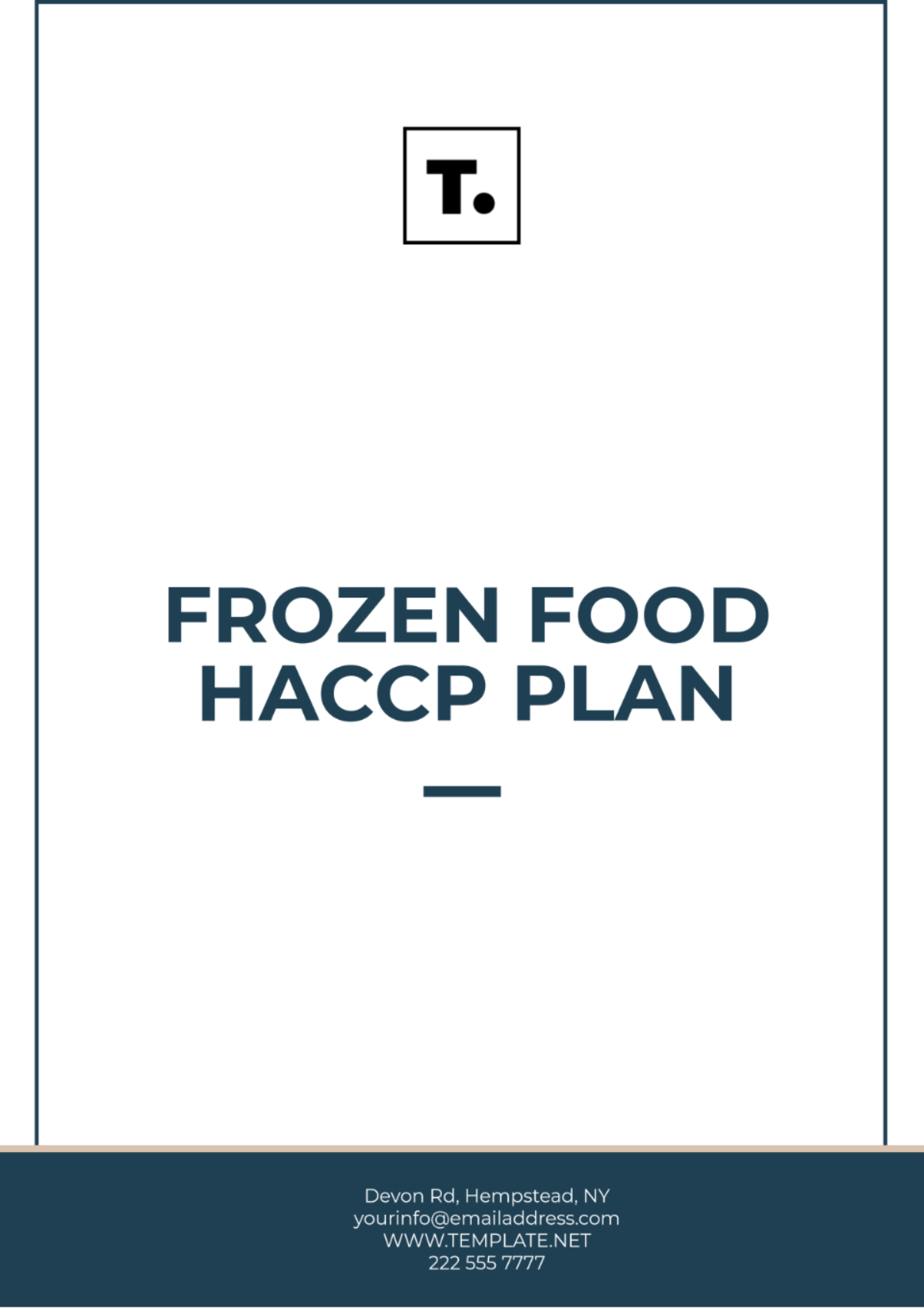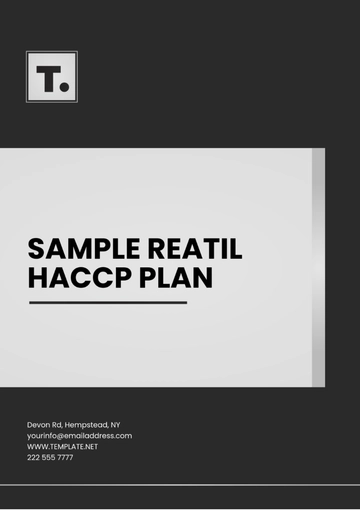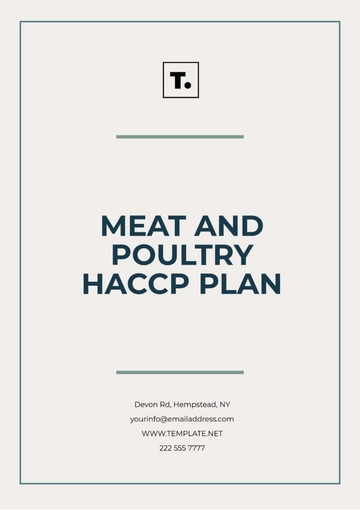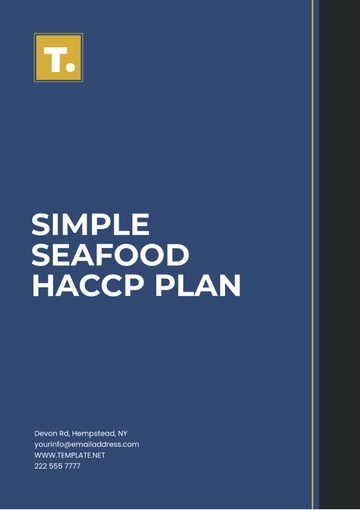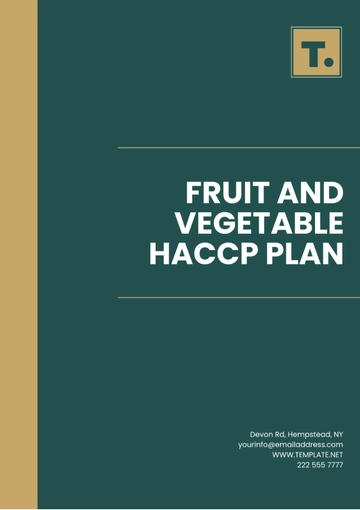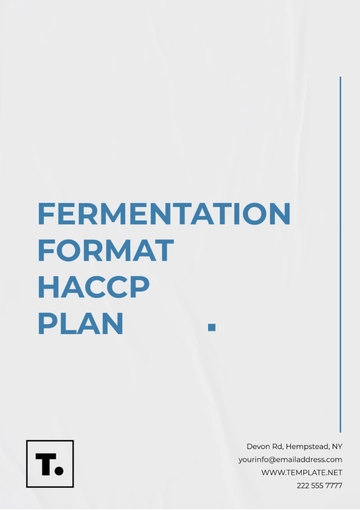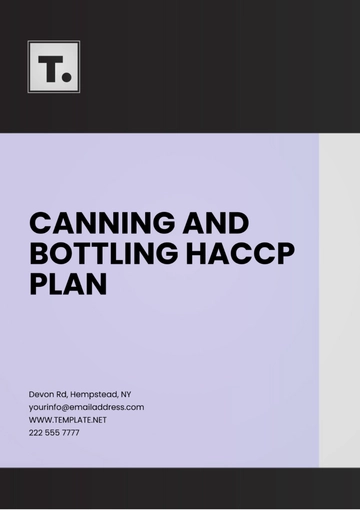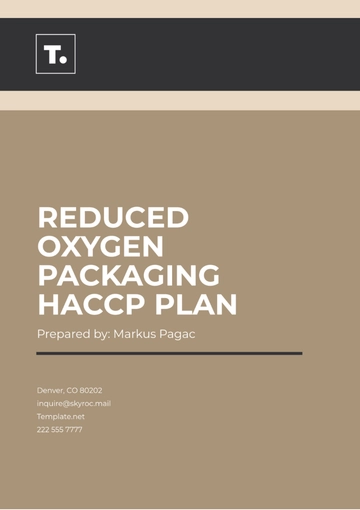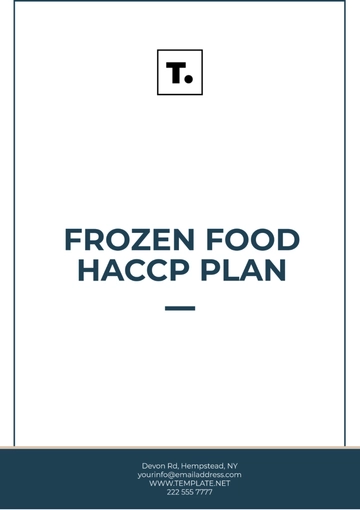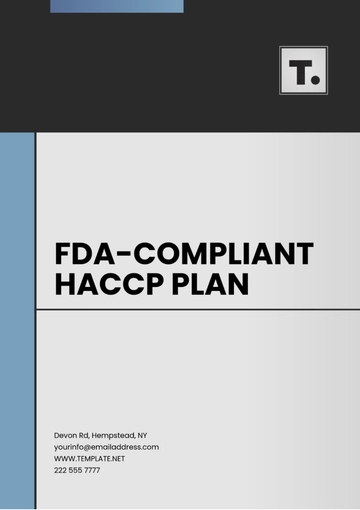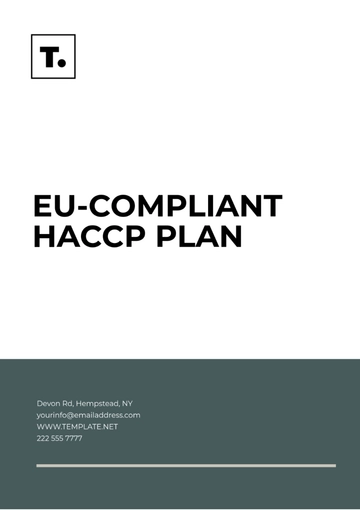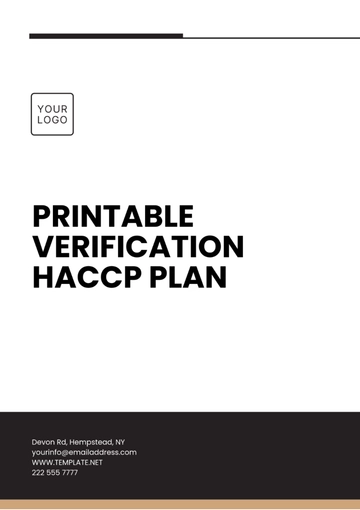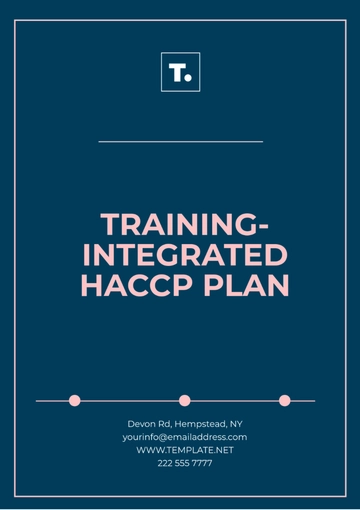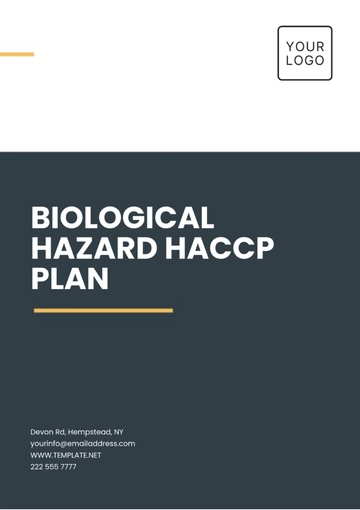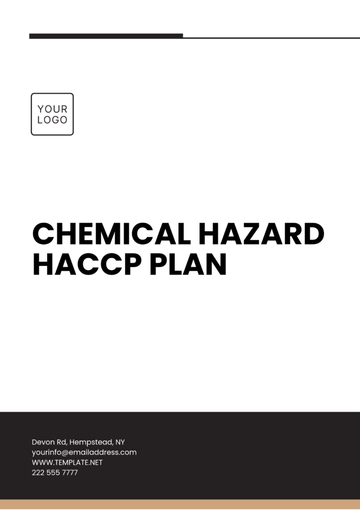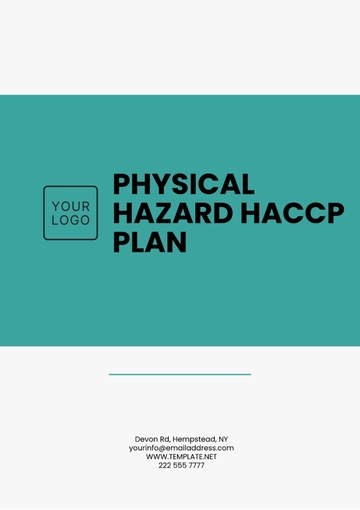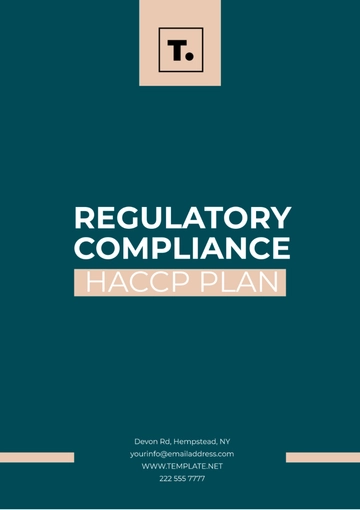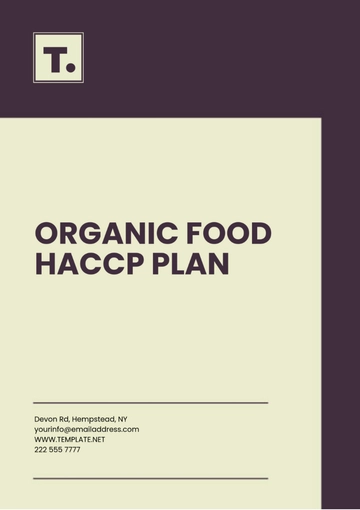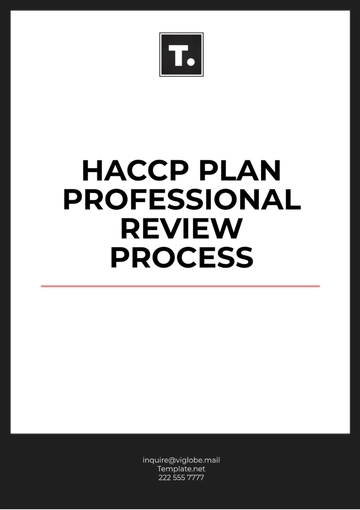Frozen Food HACCP Plan
Date: June 3, 2060
Prepared by: [YOUR NAME]
I. Introduction
The Hazard Analysis Critical Control Point (HACCP) plan presented herein is meticulously designed to safeguard the safety and quality of our frozen food products. This plan aims to identify and manage critical control points (CCPs) in the production process to prevent contamination, ensure compliance with food safety regulations, and protect consumer health.
II. Scope
A. Product Definition
This plan encompasses all frozen food products produced and packaged within our facility, including but not limited to:
Frozen vegetables
Frozen meats (e.g., poultry, beef, pork)
Ready-to-eat frozen meals
Frozen desserts (e.g., ice creams, pastries)
B. Process Overview
The processes covered in this HACCP Plan include:
Receiving and inspection of raw materials
Preparation and processing
Freezing and cooling
Packaging
Storage and distribution
III. Hazard Analysis
A. Biological Hazards
Pathogenic Bacteria: Such as Salmonella, Listeria monocytogenes, and E. coli.
Viruses: Including Norovirus and Hepatitis A, which can contaminate food during handling.
B. Chemical Hazards
Pesticide Residues: From agricultural products.
Food Additives and Preservatives: Concentrations exceeding regulatory limits, can pose health risks.
C. Physical Hazards
IV. Critical Control Points (CCPs)
Identifying CCPs is essential to control food safety hazards throughout the production process. The following table outlines the critical control points identified:
Process Step | CCP | Hazard Controlled |
|---|
Receiving | Temperature control | Biological hazards |
Preparation | Cross-contamination prevention | Biological and physical hazards |
Freezing | Time and temperature control | Biological hazards |
Packaging | Integrity checks | Physical hazards |
Storage | Temperature monitoring | Biological hazards |
V. Monitoring Procedures
A. Methods
B. Frequency
VI. Corrective Actions
In the event of deviations from established critical limits, the following corrective actions must be implemented:
Identification and Isolation: Promptly recognize and segregate any products that have been affected to prevent them from being distributed.
Root Cause Investigation: Conduct a comprehensive analysis to determine the root causes and factors that contributed to this deviation.
Corrective Measures: Implement appropriate corrective actions, which may include reprocessing, discarding, or retraining staff.
Documentation: Maintain detailed records of the deviation and corrective actions taken for future reference and compliance.
VII. Verification Procedures
A. Methods
B. Frequency
Verification activities should occur at regular intervals (e.g., monthly) and after any significant changes in production processes, equipment, or products.
VIII. Record Keeping
A. Documentation Requirements
Maintain accurate and comprehensive monitoring records for all CCPs.
Document all corrective actions taken, including dates, personnel involved, and measures implemented.
Preserve verification reports and audit findings for reference and regulatory compliance.
IX. Review and Update Procedures
A. Guidelines
B. Responsibilities
The HACCP team is charged with conducting regular reviews, updating the HACCP Plan, and ensuring its ongoing compliance and effectiveness through training and awareness initiatives for all employees involved in the food production process.
Plan Templates @ Template.net
